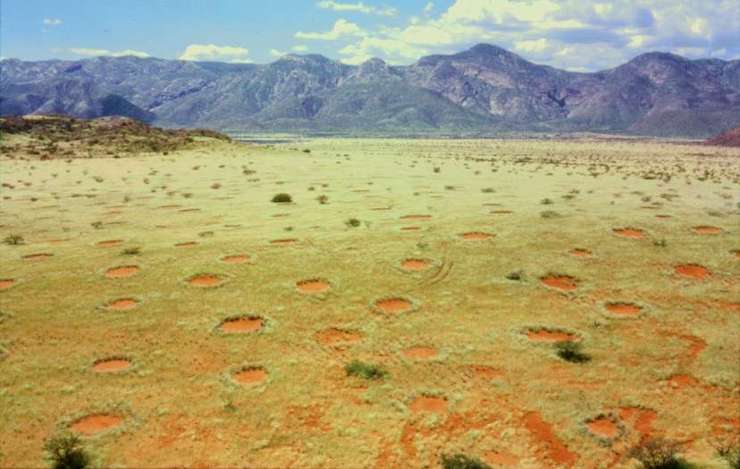
© Thorsten Becker
Alan Turning was born on June 23, 1912, in London, England. He became one of the brightest mathematicians and is considered to be the father of theoretical computer science. Alan was also known for his studies on theoretical biology and published a groundbreaking paper on the subject called “The Chemical Basis of Morphogenesis” in 1952. Morphogenesis describes the way a cell takes on its shape and develops an organism’s physical attributes. Turning’s paper revealed the reaction-diffusion theory of how these cells develop patterns in nature. These patterns, like the stripes on a zebra, have become know as Turning Patterns. This past September, a group of researchers used drones to apply Turning’s theory of patterns to mysterious Fairy Circles found in Australia.
Fairy Circles are barren patches of land that appear in arid grasslands making a polka dot like pattern. They were at first only found in Southern Africa, particularly in the Namib desert. Very little was known about how these rings were formed, but it was believed that the phenomenon was unique to Namibia. Then in 2014, an occurrence of Fairy Circles in the Western Australian Outback raised questions as to how these patterns were arising. African Bushmen and Australian Aboriginal Peoples believe that these Fairy Circles are the footprints of gods. Scientists argue back and forth that the circles are formed by insects, though no definitive proof has been made.
A collaboration of ecologists led by Dr. Stephan Getzin from the University of Göttingen in Germany, applied Turning’s theory of morphogenesis to prove how these Fairy Circles come about. After a wildfire destroyed a field with Fairy Circles, the team set up to observe if and how the grasses would regrow. The first step was to take soil samples that provided information on current conditions. Then moisture sensors were placed in specific locations to detect water and nutrient distribution. After this, Dr. Getzin and his team used a drone with multispectral analysis capabilities to map and photograph five separate Fairy Circles. As explained by Dr. Getzin, being able to get a full understanding of how Fairy Circles develop can only be done through a bird’s eye point of view. Drones are the best tool for this as they can be used over a period of time to gather mass amounts of data and much cheaper rates than using airplanes. This data can go beyond simple snapshots when taken with high resolution. Infrared cameras also allow researchers to look at how moisture levels affect the growth of grasses around the circles.
The images collected with the drone showed the ecologists that a natural pattern, indicative of a Turning Pattern, was causing the Fairy Circles to emerge in the clay based grasslands of the Outback. The drone data and soil samples pointed out that there was clearly one factor causing the grass to grow while a conflicting, repeating factor was stopping the grasses from growing in almost perfect circles. The morphogenesis of the way the Outback grasses grow creates a Turning Pattern. “We could show for the first time with many and very detailed field investigations,” Dr. Getzin said, “that Turing’s theory and all the assumptions in the model/theory are indeed met in nature.”
The drone data went on to show that these factors relate to how water is dispersed through the clay bank. As the dry Fairy Circles form they create reservoirs of water retention between themselves. These spaces in between then provide perfect conditions for grasses to grow in what would have been an arid, barren landscape. The water channels between the Fairy Circles allowed grasses to develop roots, which in turn shaded the ground to keep temperatures cool enough to support life. “The intriguing thing is that the grasses are actively engineering their own environment by forming symmetrically spaced gap patterns. The vegetation benefits from the additional runoff water provided by the large Fairy Circles, and so keeps the arid ecosystem functional even in very harsh, dry conditions,” Dr. Getzin explained. “Without the self-organization of the grasses, this area would likely become desert, dominated by bare soil.”
Dr. Getzin admits that while the drones have proven the Australian Fairy Circles are formed based on Turning’s theory, it may not hold for the Fairy Circles found in Africa. While both regions are arid grasslands, soil conditions are very different. The Outback soil is made of cracked clay as opposed to the sandy soils of the Namib desert. Dr. Getzin hypothesizes that insects like termites could in fact influence the formation of African Fairy Circles, though the data collected with the drones proves this is not the case in Australia. Dr. Getzin and his collaborators plan on conducting similar trials with soil samples, moisture sensors, and drones in Namibia as well.
|